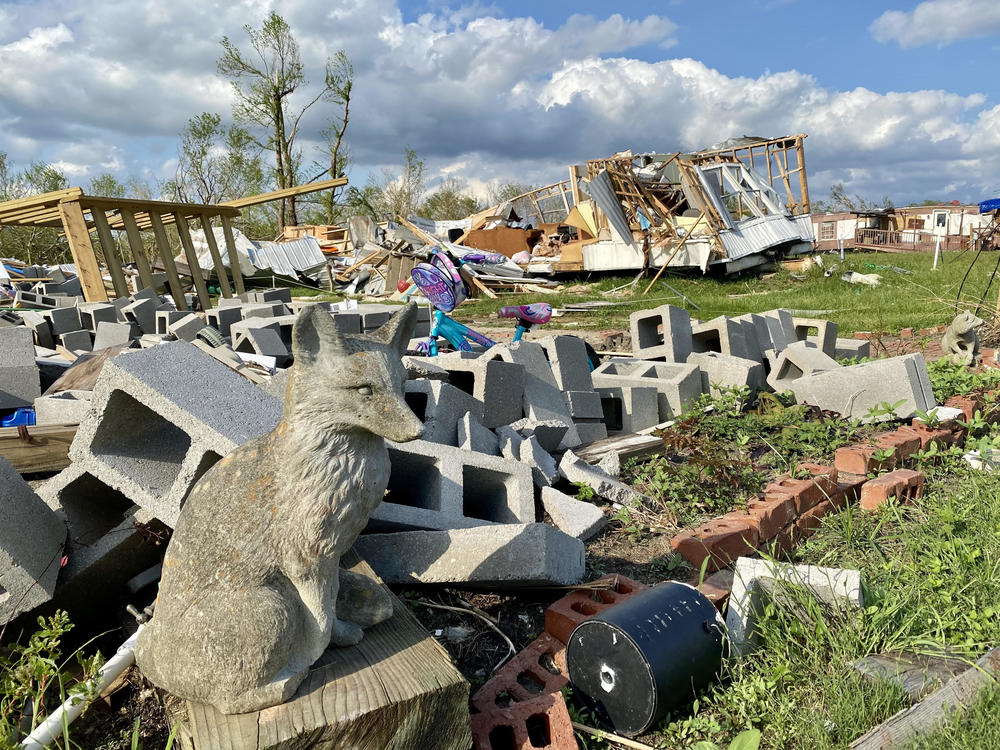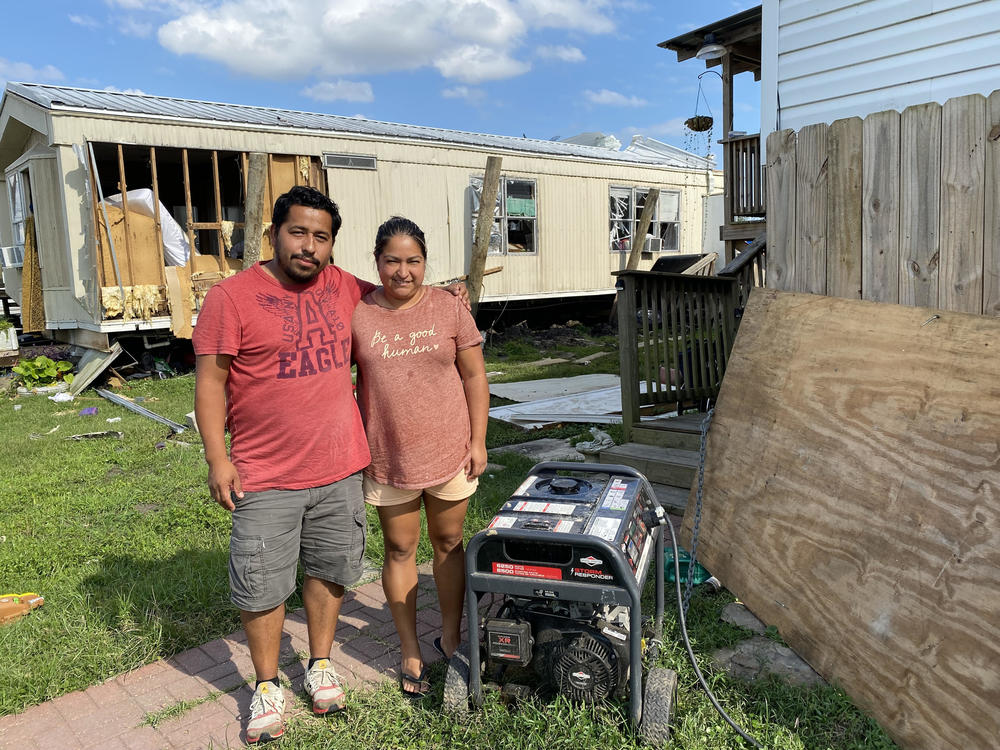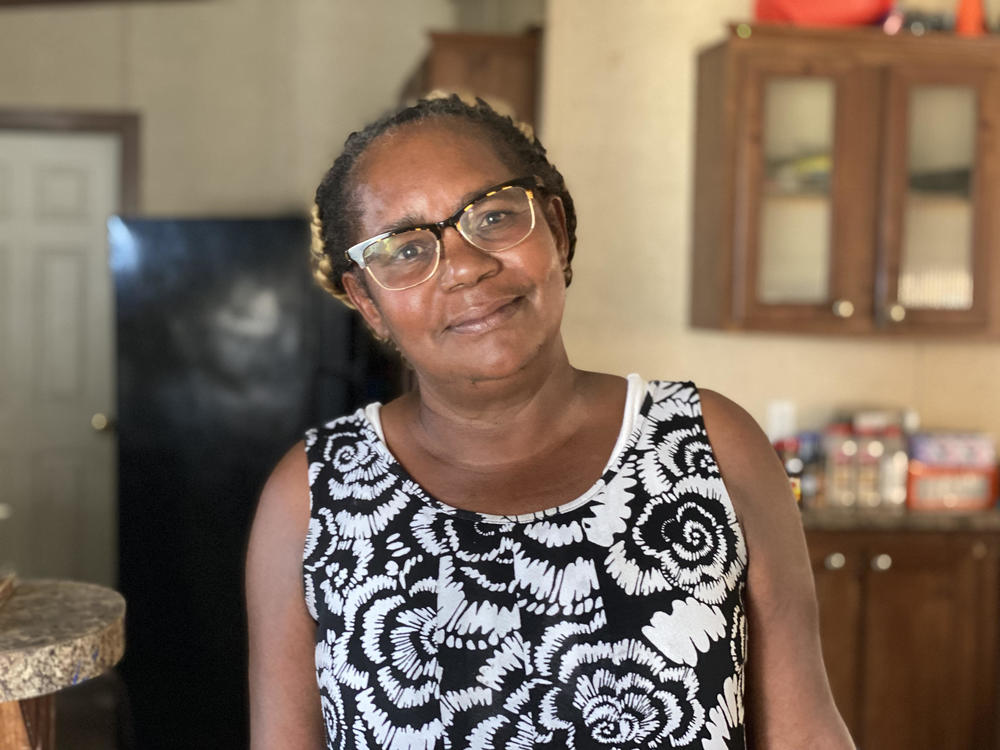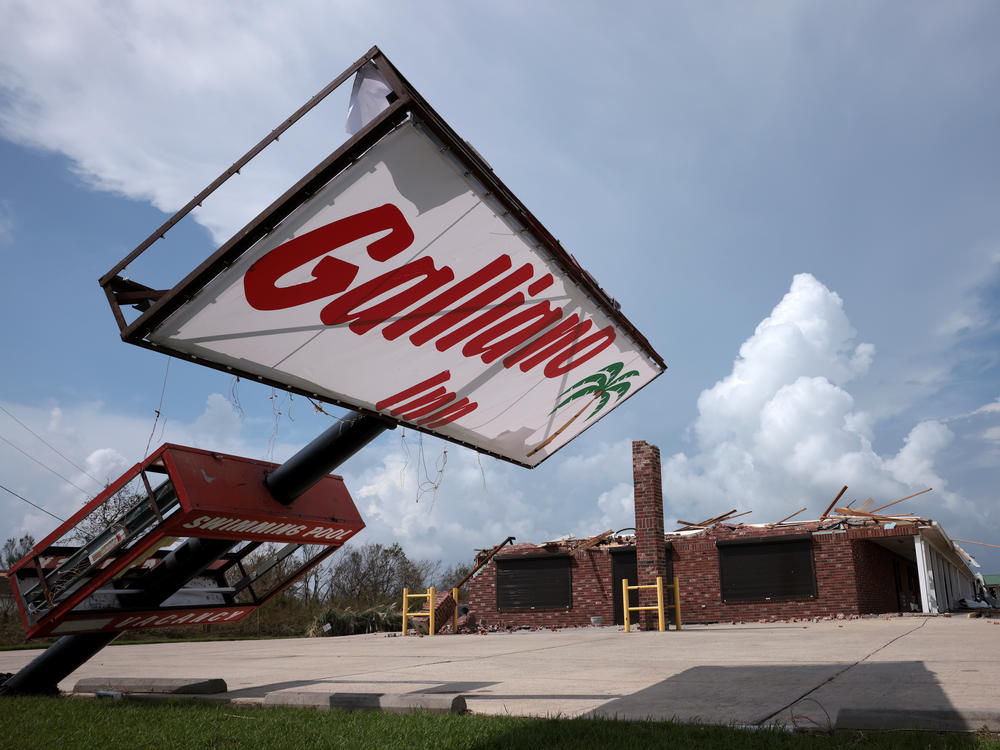Section Branding
Header Content
Two Weeks After Hurricane Ida, Tens Of Thousands in Louisiana Are Still Without Power
Primary Content
GALLIANO, La. — Hurricane Ida stripped thousands of residents in this state of their power, their livelihoods, and in wrecking their homes, it dropped their net worth almost to zero.
In this town, it's easy to see the carnage of neighborhoods when driving around. Trailers lull crushed on their sides. In some lots there's no semblance of a building at all, just wadded-up rubble, ruined furnishings and broken glass.
An oasis among the destruction
But the home on 132 Orange is an oasis on this street. Somehow the home that Leydi Lopez and Ivan Velazquez share with their kids, and her mother, held together. The roof is in tatters, part of the siding blew away, there are shattered windows, the door won't close anymore, and the power's been out since the storm, but it's livable by current Galliano standards.
And because this trailer is relatively intact it is bursting at the seams. The neighbors, whose place was destroyed, have moved in. That's two kids, both parents, and an ailing grandmother who sits on the couch clutching her walker with a look of blank exhaustion. Ten people in all, stuffed into this single-wide trailer, with just one bathroom.
The neighbor couple and their young daughter have moved into the kid's room
"Grandma sleeps in the couch and her son sleep in the recliner," says Lopez of her neighbor's mother and grandson. "We use the other room, there's a king sized bed there, so I sleep with my mom and my two kids and my husband is using a single mattress that we put everyday there."
All the kids are bottled up indoors, because the outside world is a danger zone, and they're out of school indefinitely. Lopez has a small generator, but runs it only sporadically to save gasoline. There's no TV, no working appliances, all the cooking is done on the barbeque grill outdoors.
And power. They're told it may not come on here until mid-October.
The power could be out for another month
Tens of thousands of families are facing similar circumstances.
"Everything is like over and over and over. You got people stressing," says Ivan Velazquez. It's like a bomb, he says, the pressure is building.
Velazquez spends most of his time working, tearing into repair projects for wealthier people. So, he's out negotiating the relentless traffic jams in the hurricane destruction zone, caused by crews cutting trees and repairing power lines, by malfunctioning stop lights, and by wrecks.
"On the road almost every day, I see accidents, bad accidents."
A few days before he saw a hit-and-run on US-90, and saw the victim dead on the side of the road.
Lopez and Velazquez are grateful at least to have their own little refuge here. A block up the desolate lane Clair McGowan's place has fallen off its six-foot concrete columns. It sags sideways, dark, damp and precarious. McGowan and her husband have been living in the relative comfort of his sister's place, though it too lacks power, and even water was an issue.
"We was out of water for two or three days, so we had to get water out of the bayou," says McGowan, with a smile. "My husband and I went with an ice chest, in order for my kids to use the bathroom. We have to do what we have to do," she chuckles.
We have to do what we have to do
McGowan says she's just putting her life in God's hands. That's the refrain here, carry on, and somehow all this will sort out. A lot of people here carry deep religious faith.
Back up the street, life goes on. Leydi Lopez is getting ready to make a special meal.
"I'm making some, typical food from Mexico. It's Mole," says Lopez beaming. "Because we have been eating eggs the whole week. Yeah. So we decided to do something else today."
Families here are facing a much tougher decision this month. Whether to patch up this trailer, like they did after Hurricane Laura battered it just last year, and then hope, hope for a few good years before the next natural disaster. That, or pack up, and find a safer place to call home.
Copyright 2021 NPR. To see more, visit https://www.npr.org.




